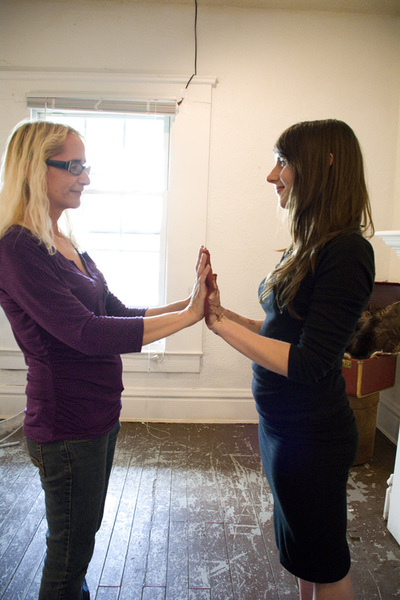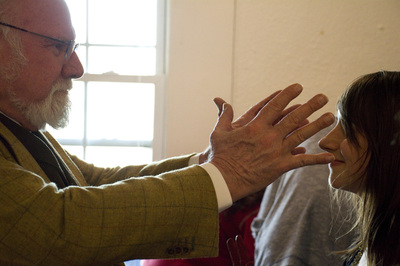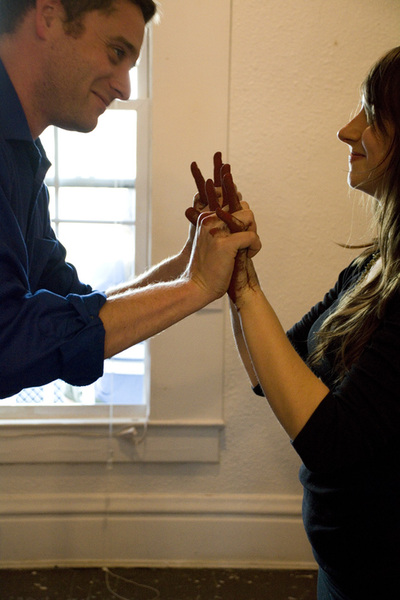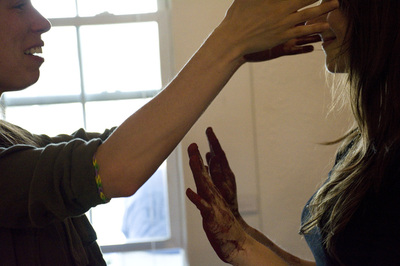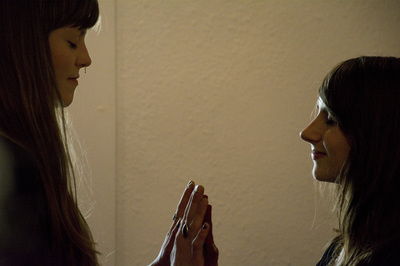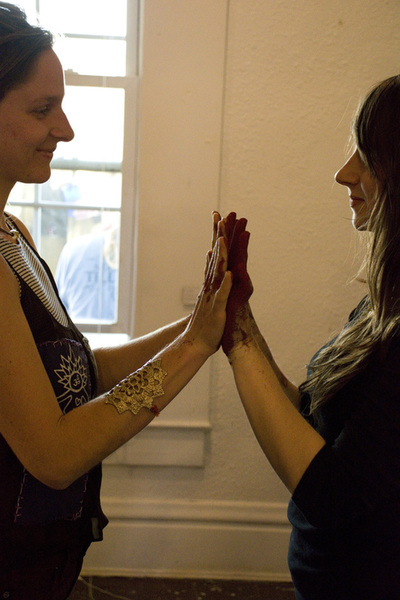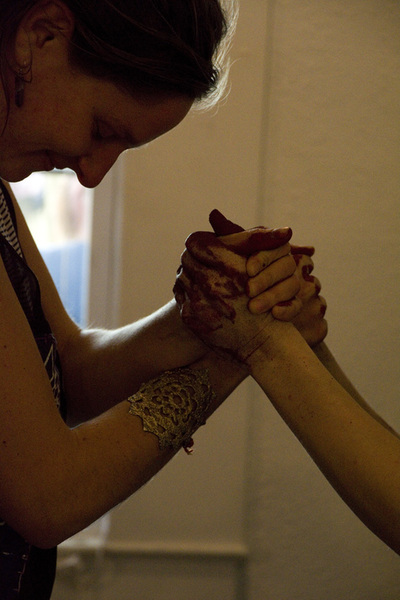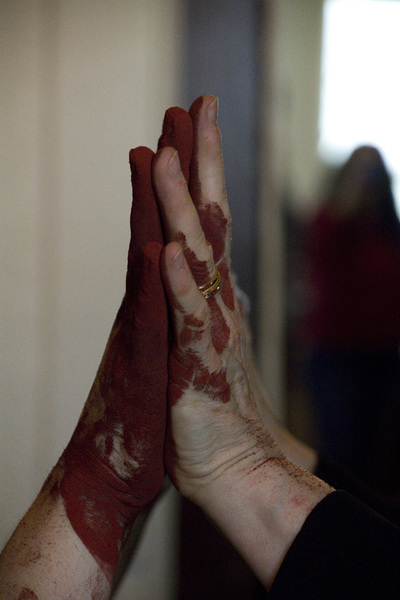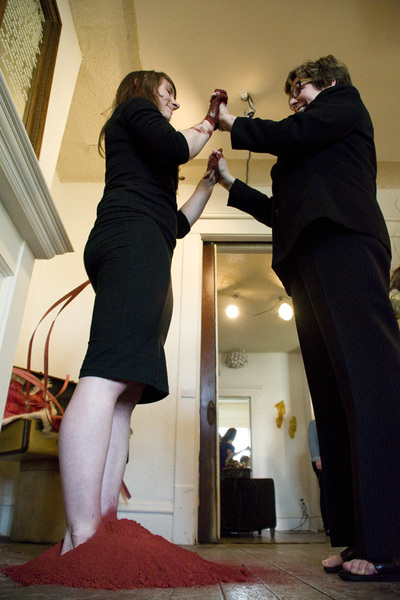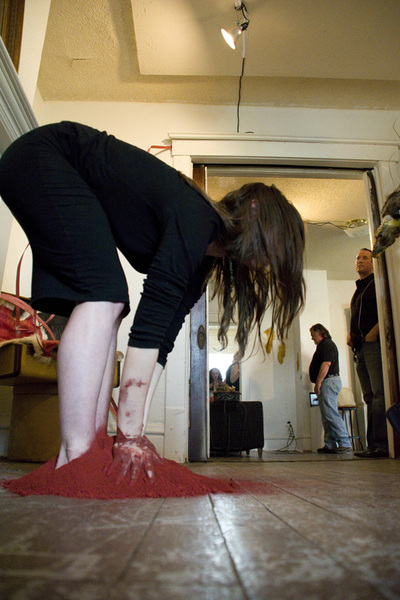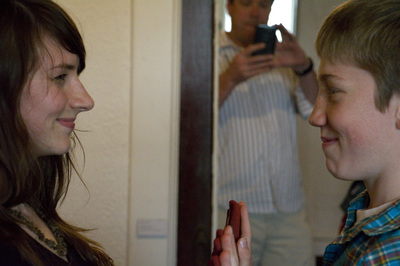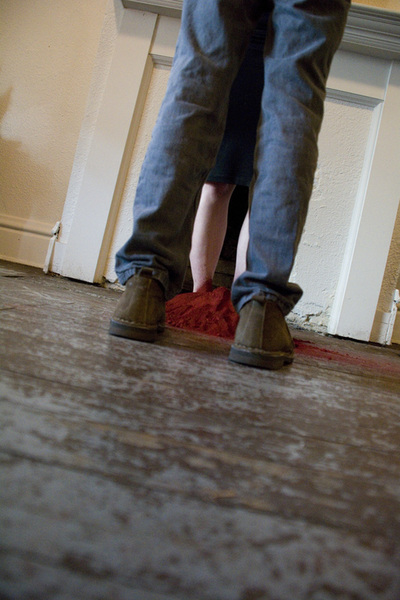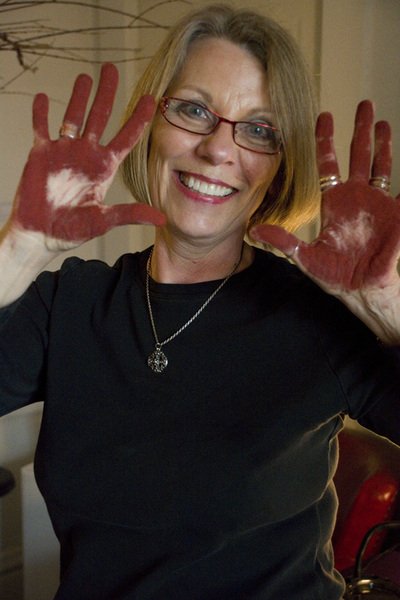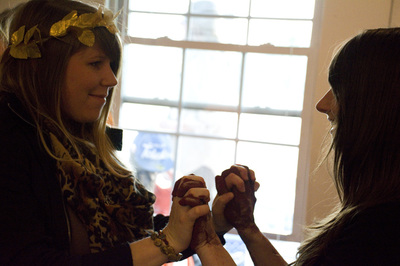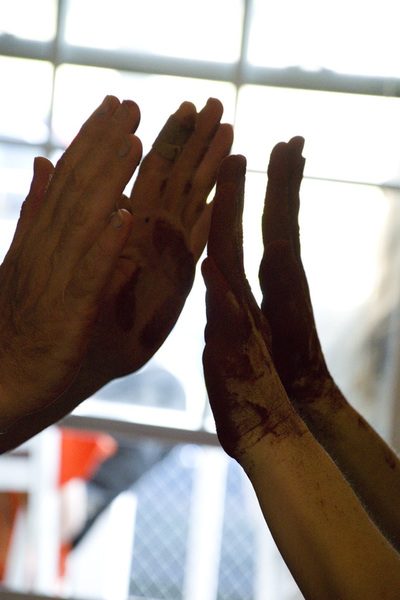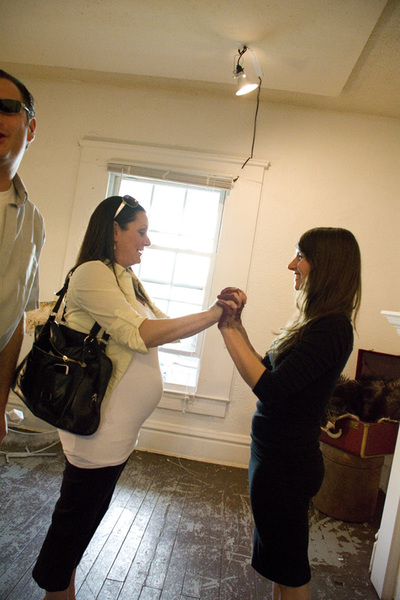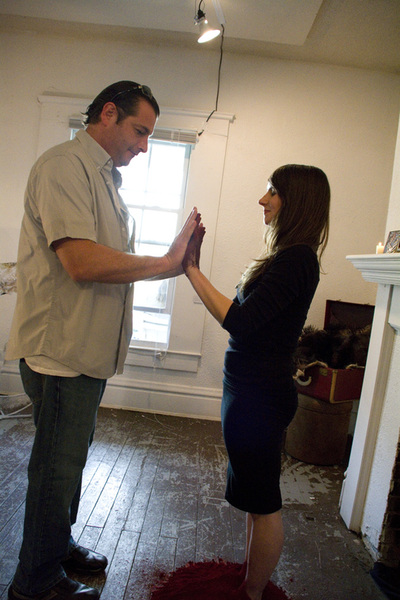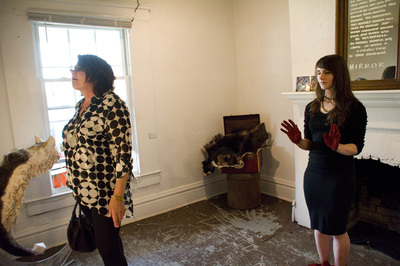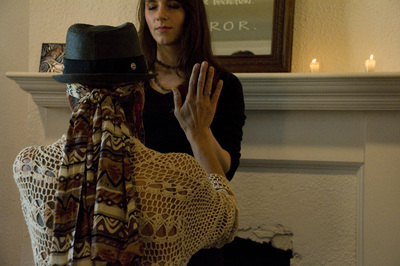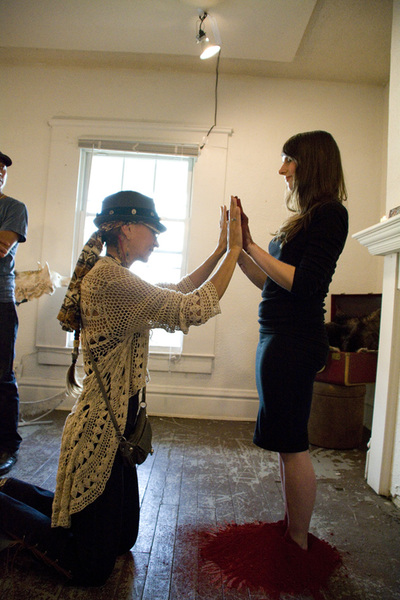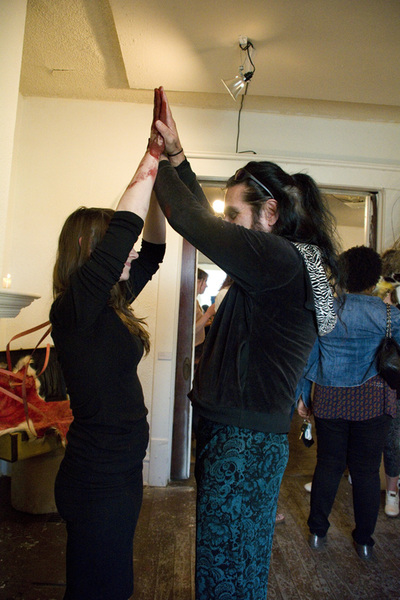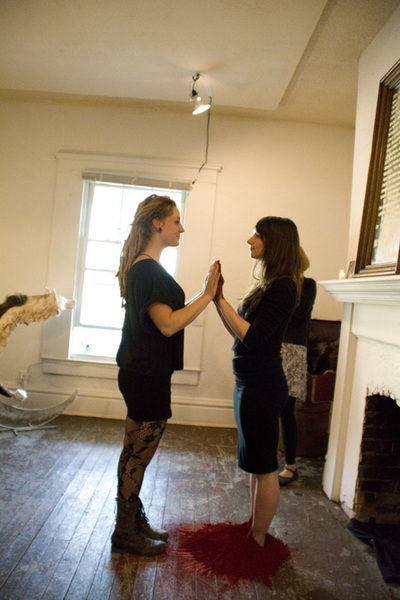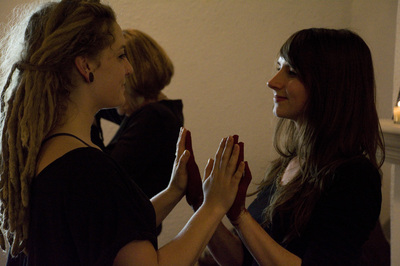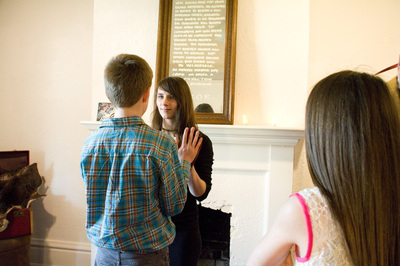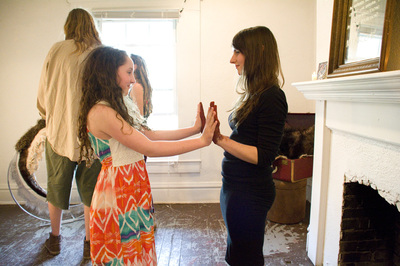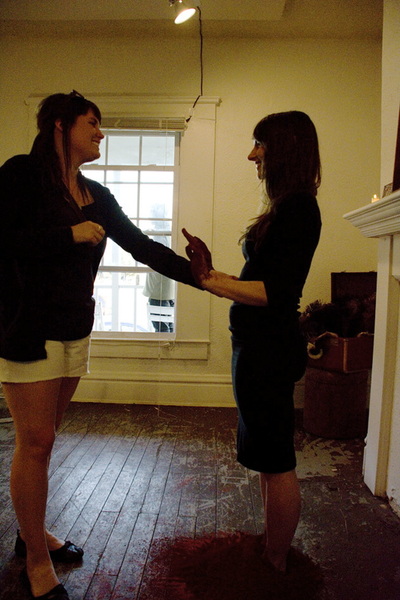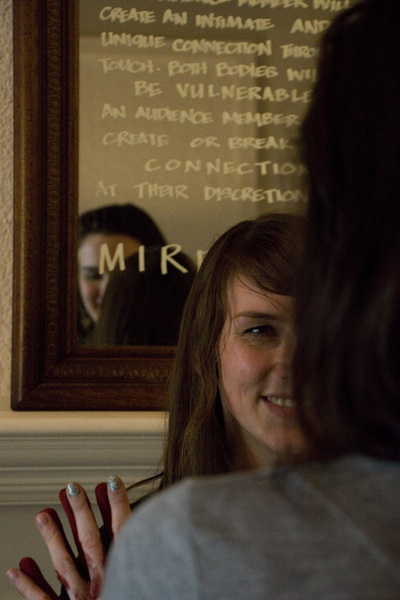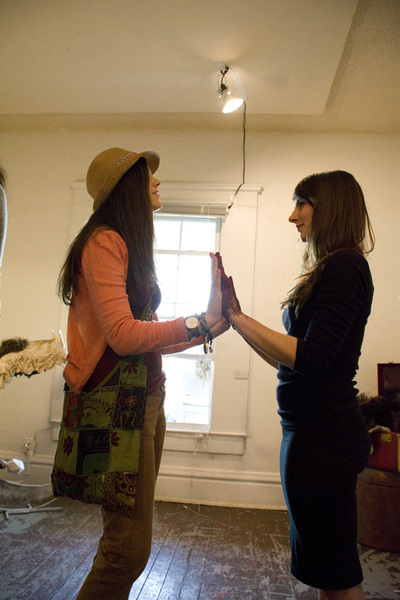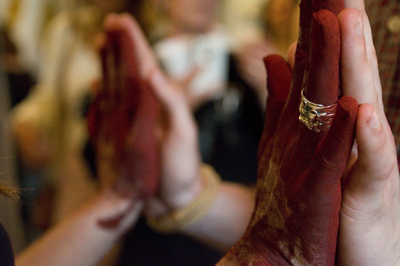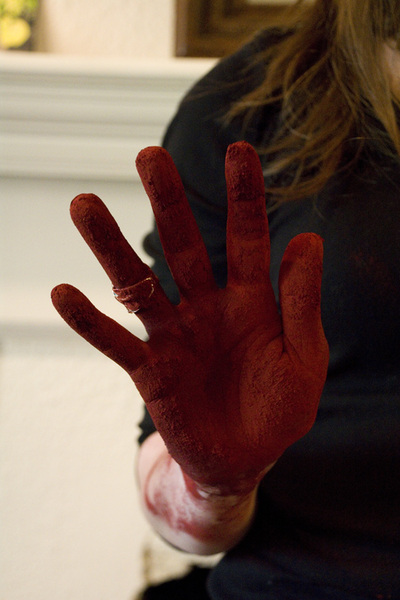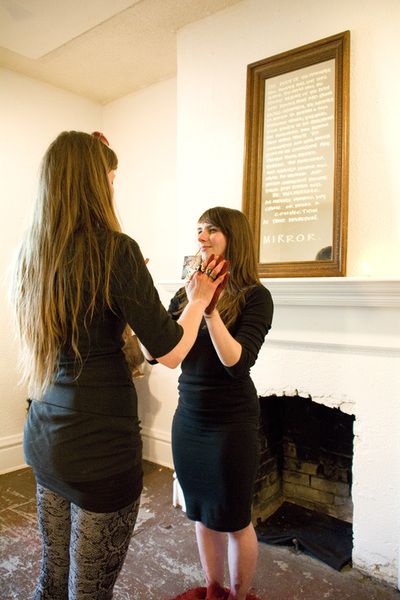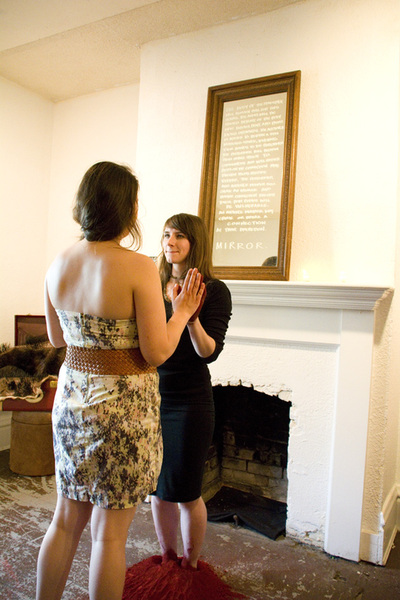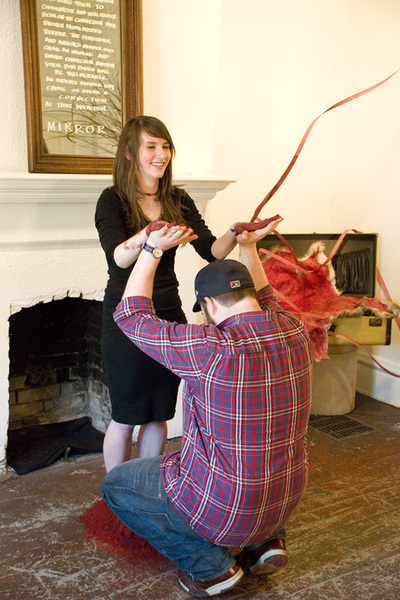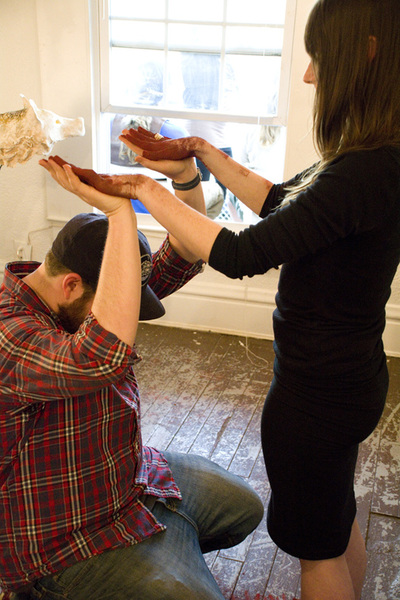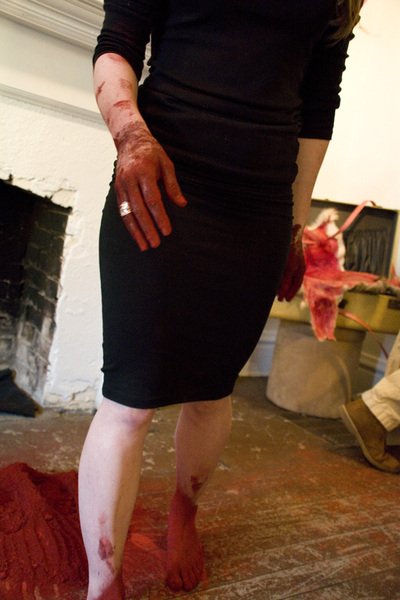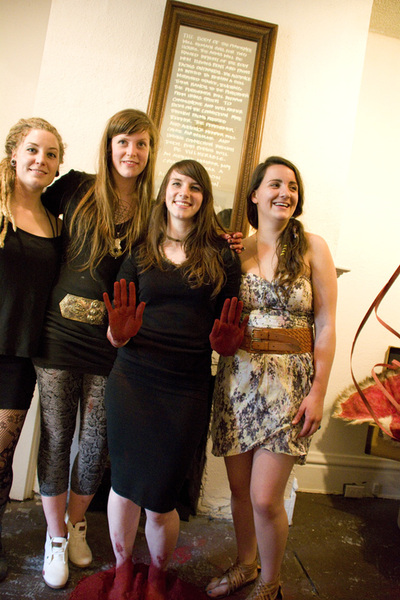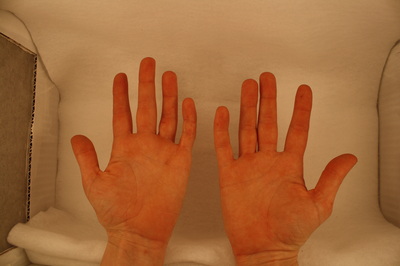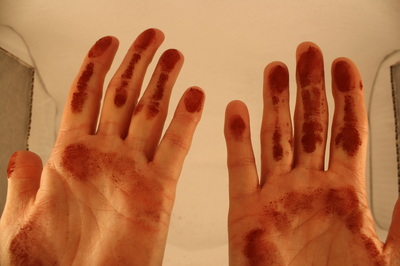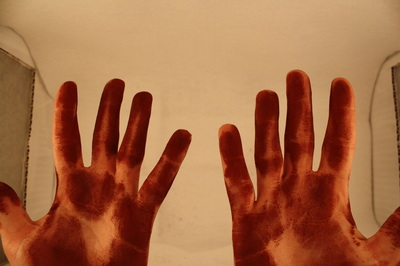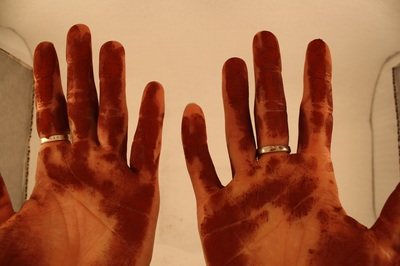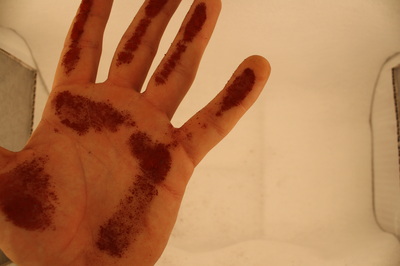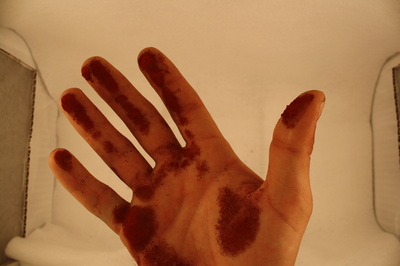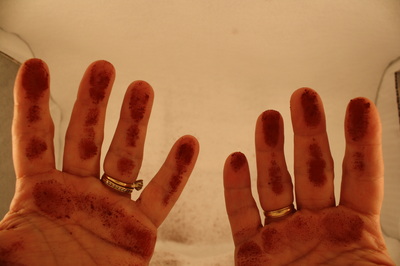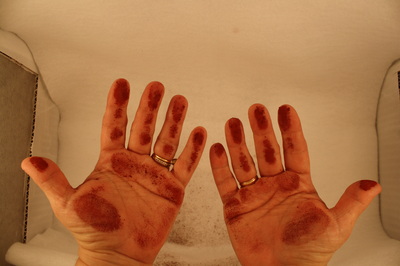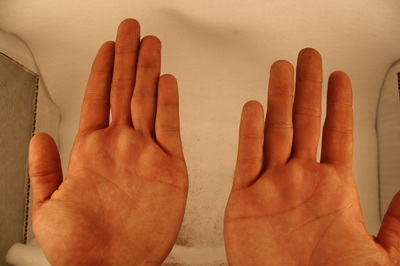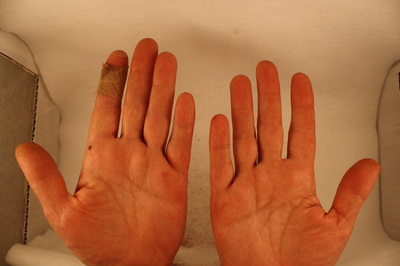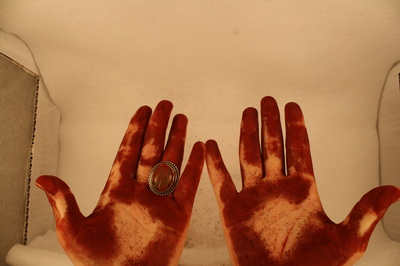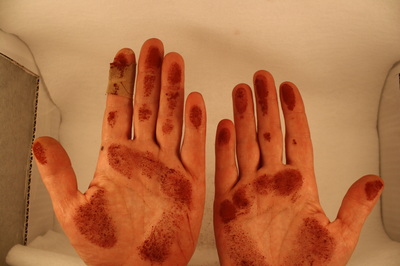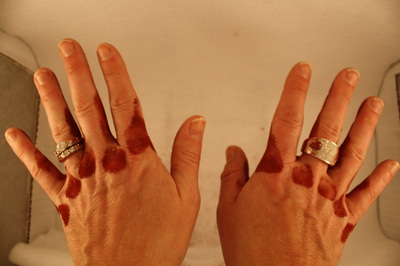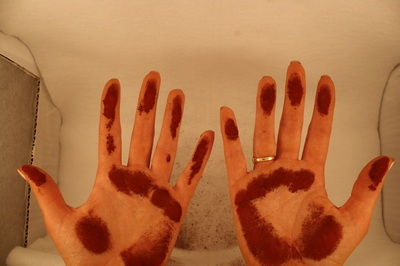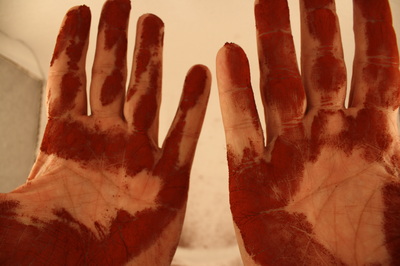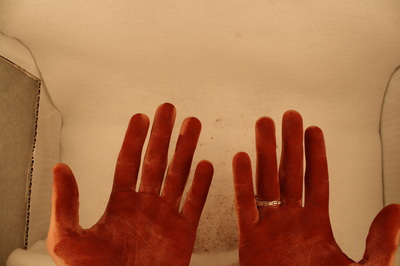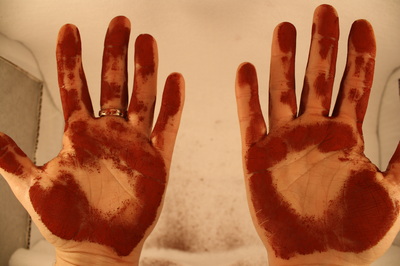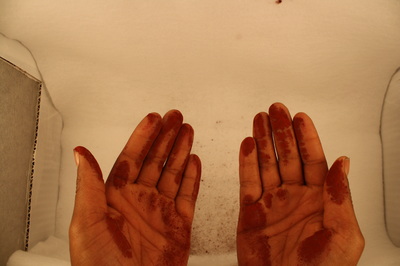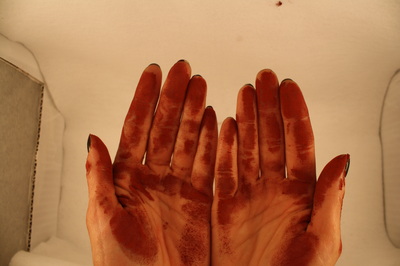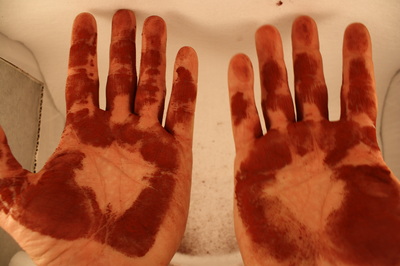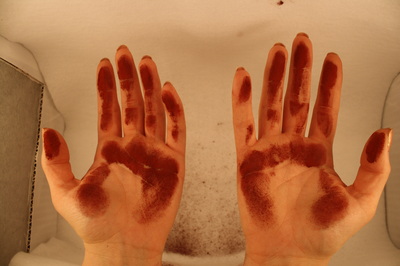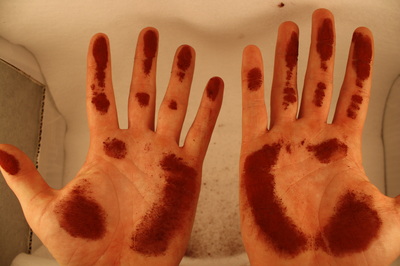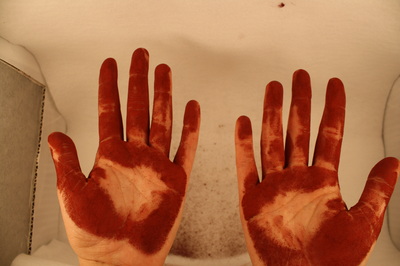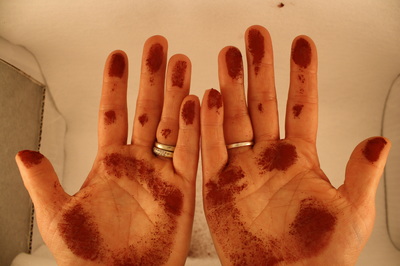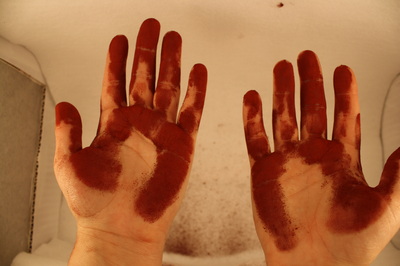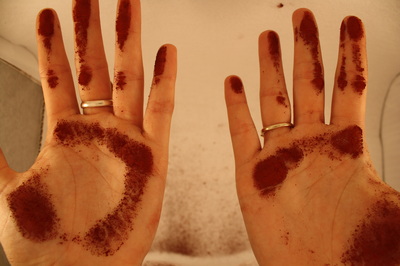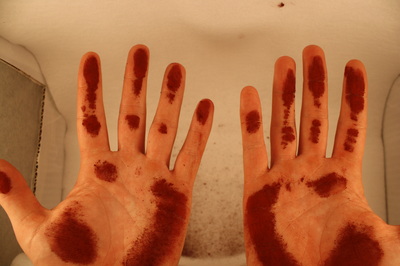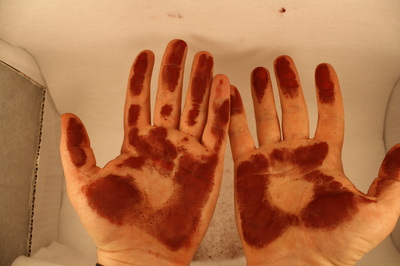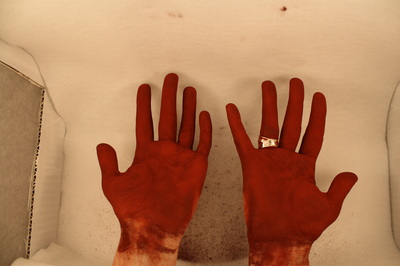Mirror was a two-hour passive performance piece. It happened on April 12, 2014 at Second Sight Studio in Franklinton, Ohio.
The instructions were as follows:
The body of the performer will remain still for two hours. The arms will be raised infront of the body, elbows bent with palms facing outwards. The audience is invited to return a mirrored stance, touching their hands to the performer’s. The performer will refrain from using speech to communicate with the audience and will rather focus on the two separate palms pressed together. The performer and audience member will create an intimate connection through touch. Both bodies are vulnerable. An audience member may break or create a connection at their discretion.
It was painful to follow the instructions. It was physically painful to stand in the same place, without shoes, for two hours. It was painful for a control-freak to see audience members misunderstand the instructions. Outside of bending down to re-pigment my hands in the pile surrounding my feet, I didn't move. I didn’t speak. I smiled often. It felt like an out-of-body experience. The opening was packed with people and all I saw or acknowledged were those in front of me. Many people entered the room, saw the mass amounts of pigment and immediately turned their backs, not open to the potential that their clothes or hands would become dirty. Those who knew me and the strangers who had the courage to participate became temporarily stained with the mark of our interaction.
I had varying experiences with the audience. Some participants would not make eye contact with me but I commend them for having the courage to take part in the happening. Some strangers and I exchanged silly faces, using humor to dissipate what could have been an awkward encounter. The particularly moving moments were with people I haven’t seen in a long time yet we live 10 minutes apart in Columbus. Pressing together with Kade Conklin, one of the four women showing work, was also a particularly moving experience. I felt almost every emotion during those two hours. I cried, I laughed, I felt empowered, judged, stupid, I felt alone and unnoticed and then awkwardly in the spotlight at other times. At times I questioned why I was even doing the performance. My interaction with an old friend that resulted in tears reassured me of my doing.
My intention for Mirror was to create a deliberately intimate moment for two people. In a technology-ridden society, I have found these moments aren’t easy to encounter. I set aside two hours where I’d solely devote my full attention (physically and mentally) to whomever stood in front of me. We were physically and emotionally marked by the encounter, each unique and ever-changing. The instructions were written so any person can be the performer, any person can create these deliberate moments and become entirely vulnerable.
Here's an article (BrainPickings, Maria Popova) about "How to Listen Between the Lines"
The instructions were as follows:
The body of the performer will remain still for two hours. The arms will be raised infront of the body, elbows bent with palms facing outwards. The audience is invited to return a mirrored stance, touching their hands to the performer’s. The performer will refrain from using speech to communicate with the audience and will rather focus on the two separate palms pressed together. The performer and audience member will create an intimate connection through touch. Both bodies are vulnerable. An audience member may break or create a connection at their discretion.
It was painful to follow the instructions. It was physically painful to stand in the same place, without shoes, for two hours. It was painful for a control-freak to see audience members misunderstand the instructions. Outside of bending down to re-pigment my hands in the pile surrounding my feet, I didn't move. I didn’t speak. I smiled often. It felt like an out-of-body experience. The opening was packed with people and all I saw or acknowledged were those in front of me. Many people entered the room, saw the mass amounts of pigment and immediately turned their backs, not open to the potential that their clothes or hands would become dirty. Those who knew me and the strangers who had the courage to participate became temporarily stained with the mark of our interaction.
I had varying experiences with the audience. Some participants would not make eye contact with me but I commend them for having the courage to take part in the happening. Some strangers and I exchanged silly faces, using humor to dissipate what could have been an awkward encounter. The particularly moving moments were with people I haven’t seen in a long time yet we live 10 minutes apart in Columbus. Pressing together with Kade Conklin, one of the four women showing work, was also a particularly moving experience. I felt almost every emotion during those two hours. I cried, I laughed, I felt empowered, judged, stupid, I felt alone and unnoticed and then awkwardly in the spotlight at other times. At times I questioned why I was even doing the performance. My interaction with an old friend that resulted in tears reassured me of my doing.
My intention for Mirror was to create a deliberately intimate moment for two people. In a technology-ridden society, I have found these moments aren’t easy to encounter. I set aside two hours where I’d solely devote my full attention (physically and mentally) to whomever stood in front of me. We were physically and emotionally marked by the encounter, each unique and ever-changing. The instructions were written so any person can be the performer, any person can create these deliberate moments and become entirely vulnerable.
Here's an article (BrainPickings, Maria Popova) about "How to Listen Between the Lines"
Photos by Stephen Davis





